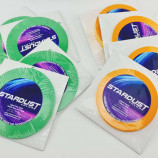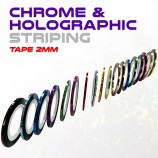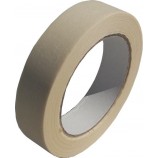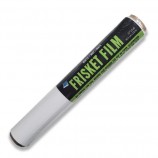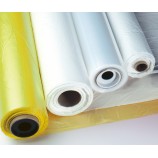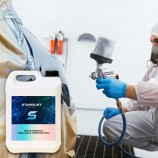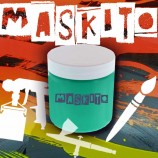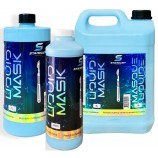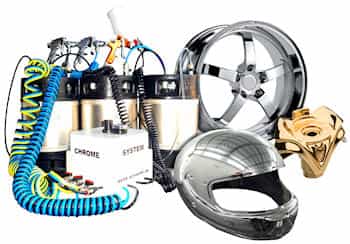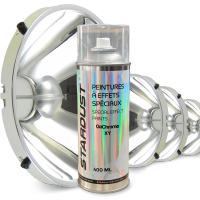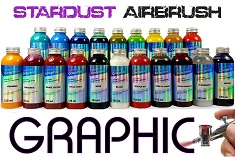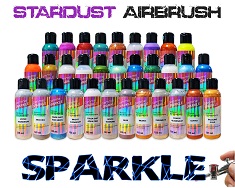They are the essential consumables among the protective tools for bodywork paint, they are the adhesives of various and varied types that are mainly used to hide and mask the areas to be protected, but not only !
In the art and practice of customization painting, there are specific adhesives that are different from the classic economical paper adhesive rolls that we are all familiar with. In our category dedicated to adhesives for body painting, we have gathered a whole collection of special adhesives that will allow you to create all the decorations on your helmets, your tanks, your bicycles and others...
One of the main qualities of all these stickers is that they do not leave any glue residue on the surface and that they can be easily removed. Indeed, if the strips left glue on the primed background or the sanded paint, then an anti-silicone degreaser should be used, which is the only solvent indicated for dissolving the glues, without dissolving the paints!
Such a problem will not happen to you with our masking tapes and films, except in certain situations: for example, if you leave the adhesives stuck to the surface for too long, or if you have applied the self-adhesive strips on solvent-based paint or even water-based paint that is too fresh, or finally, if the strips have been exposed to the sun or high heat for a certain time.
Adhesives for bodywork paints
A mask shouldn't be hard to remove. If the glue is too strong, then there may be a risk of the "support" layers peeling off. In general, masking tapes for body paint or adhesive films have a light and often repositionable adhesive. If you experience peeling of the lower layers when removing masking, then chances are the fault is not your sticker.
Indeed, a paint or a multi-coat paint system must offer a perfect guarantee of adhesion. Even if one tries to cut with a blade and pull adhesive, peeling should never occur. Be sure to overlap the layers with the correct sanding grain. Too fine sanding does not allow a good guarantee of adhesion, in general in the world of bodywork paint.
The use of adhesives in the bodywork makes it possible to reserve areas when creating graphic decorations in custom paint, or quite simply to protect areas of the bodywork during vehicle repairs. Bodywork adhesives are used to protect plastics, windows, handles, wheels... in the field of personalized paint, the use is much more specialized and it is even common for adhesives to be cut with a scalpel, overlap and intertwine with ingenious techniques.
Adhesive lines for bodywork
These are thin adhesive lines, usually made of PVC, which offer a thin thickness of about 0.3 mm maximum and which support the curvature without peeling off. There are different sizes of width from 1.5mm up to 1cm and different colors which allow to distinguish the qualities.
You may need the thin adhesive lines for several uses.
Above all, they make it possible to hide the undercoat and when you paint over it, after removing the line, you get a line in the color of the undercoat.
On the other hand, these lines are used for their flexibility, to mask curved areas. One can stick above these fine lines, standard paper adhesives, of large size and then it is enough to cut the surpluses with a scalpel just above the PVC line, to obtain an area with complex shapes but perfectly masked .
The third known use for these lines is to use them as a temporary guide for freehand drawing, especially when creating pinstriping decorations
Adhesive metallic lines
This is a new product that we see rapidly developing in the field of decorative painting on helmets, bicycles, skateboards, surfboards... Originally used in the field of nail design, these lines are available in different chrome or holographic and colored colors. They are generally of a very thin width and although they are not very flexible, it is easy to bend them according to the reliefs of the part.
These are not masking lines and their placement is not temporary. On the contrary, their installation is permanent and for this reason they are designed to be varnished and therefore to withstand solvents.
Repositionable transparent masking films
These are films delivered in rolls, with a transparent, glossy or matte appearance, whose composition is polypropylene plastic. This type of plastic film is easy to cut with a scalpel. In particular, it makes it possible to carry out complex and precise stencil work, by tracing a decoration on a screen to transfer it to the area of the bodywork that needs to be decorated.
This film leaves no sticky residue and is easy to remove and even reapply to another area. It is remarkably thin and can be cut using a "plotter" type printer. This is one of the favorite consumables for airbrush painters.
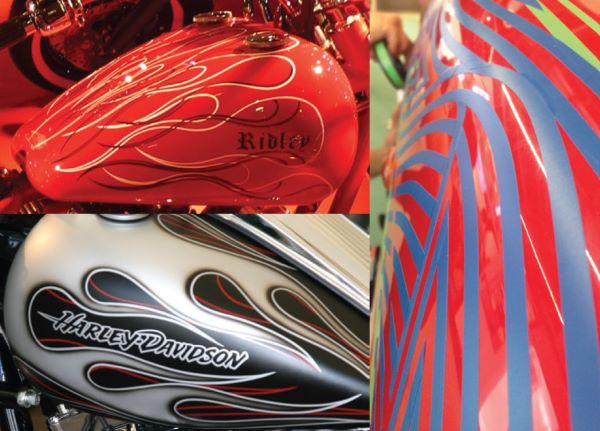
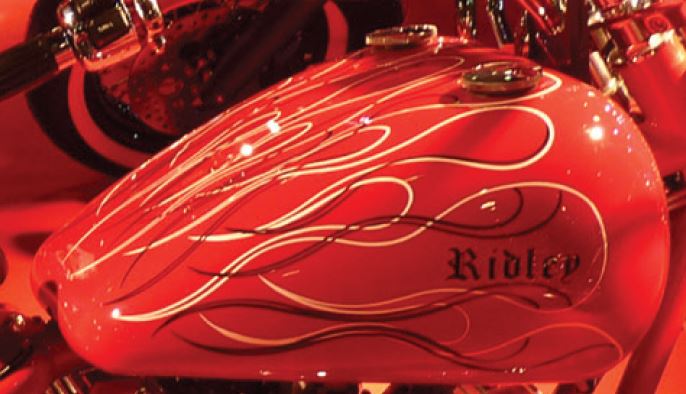
Masking film for bodywork paint
Masking paper for bodywork paint
Minimize


























